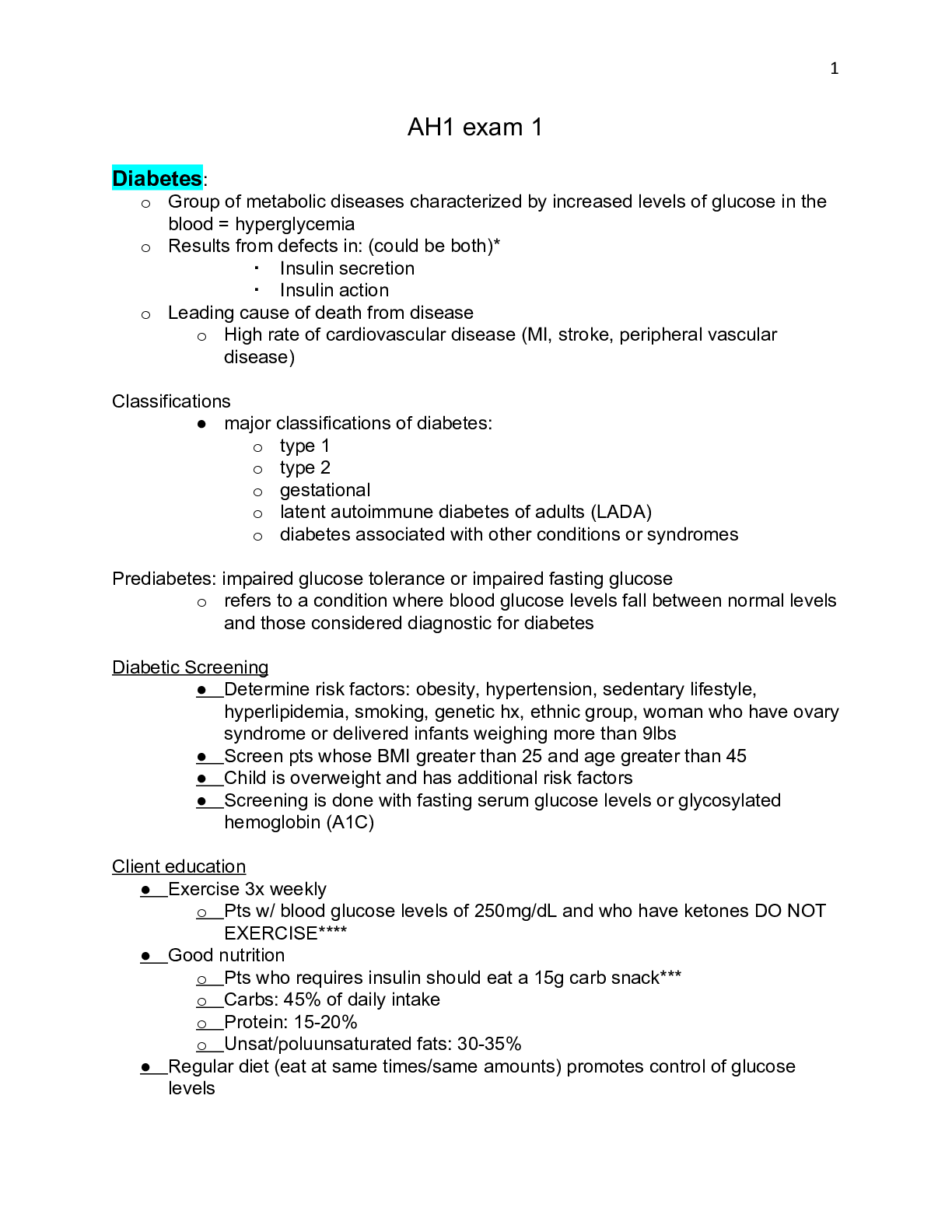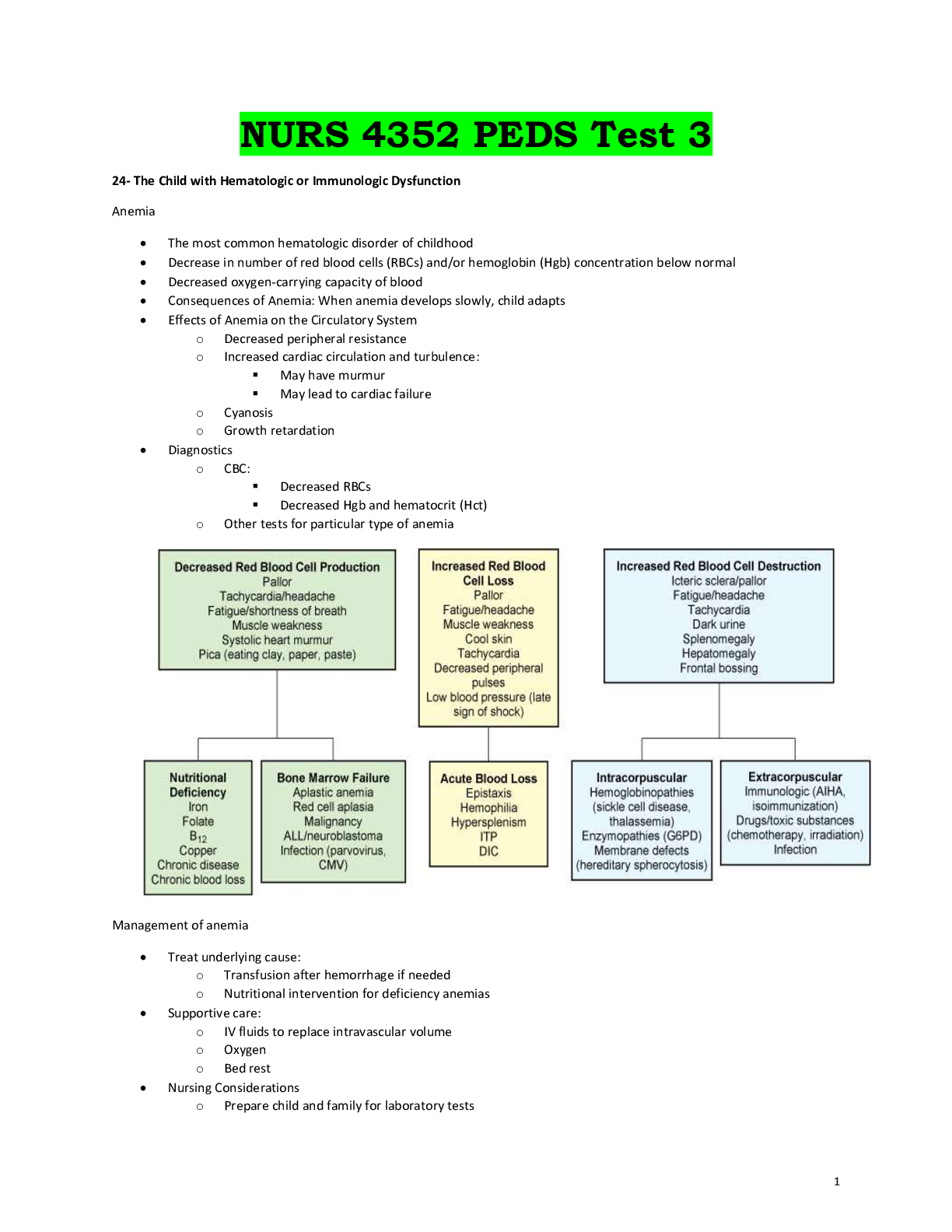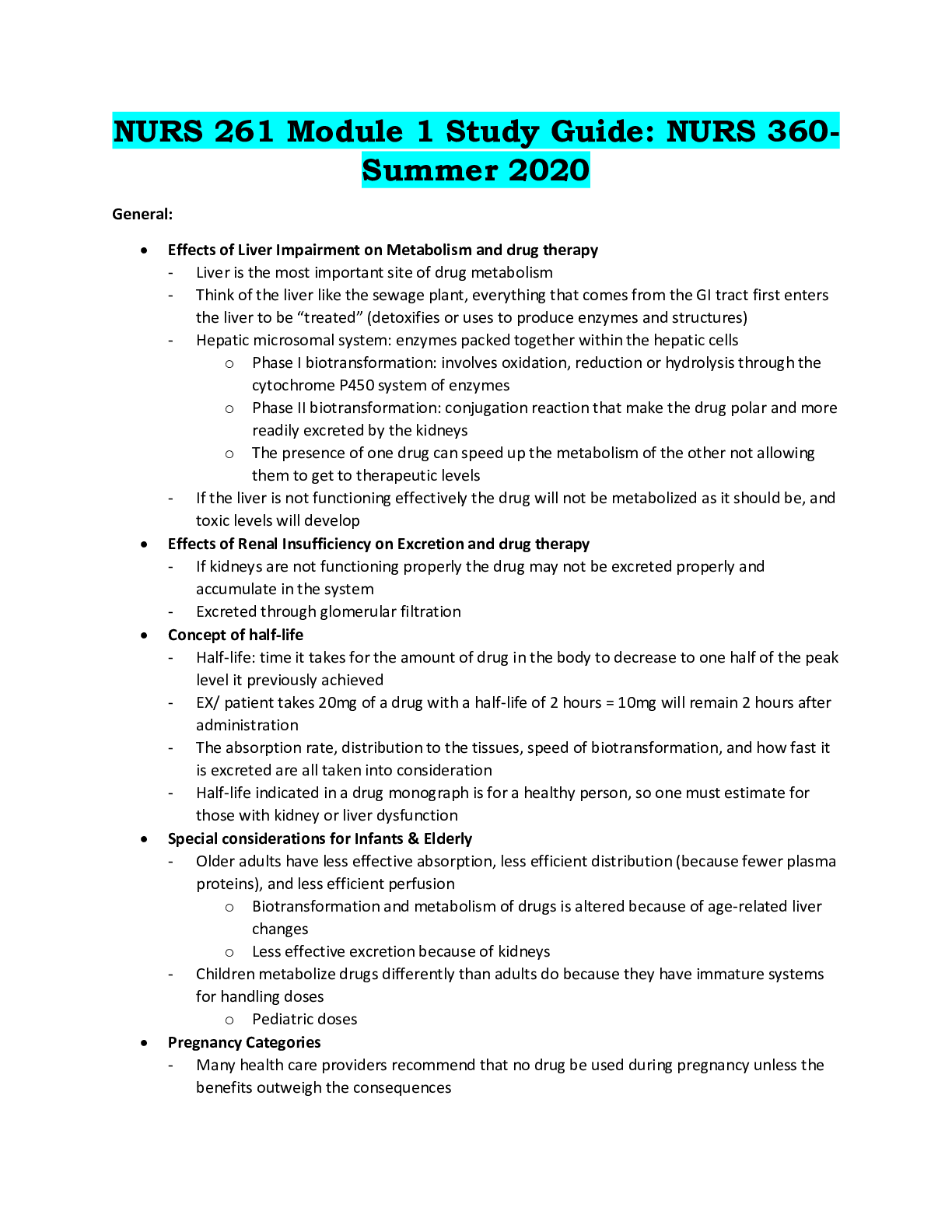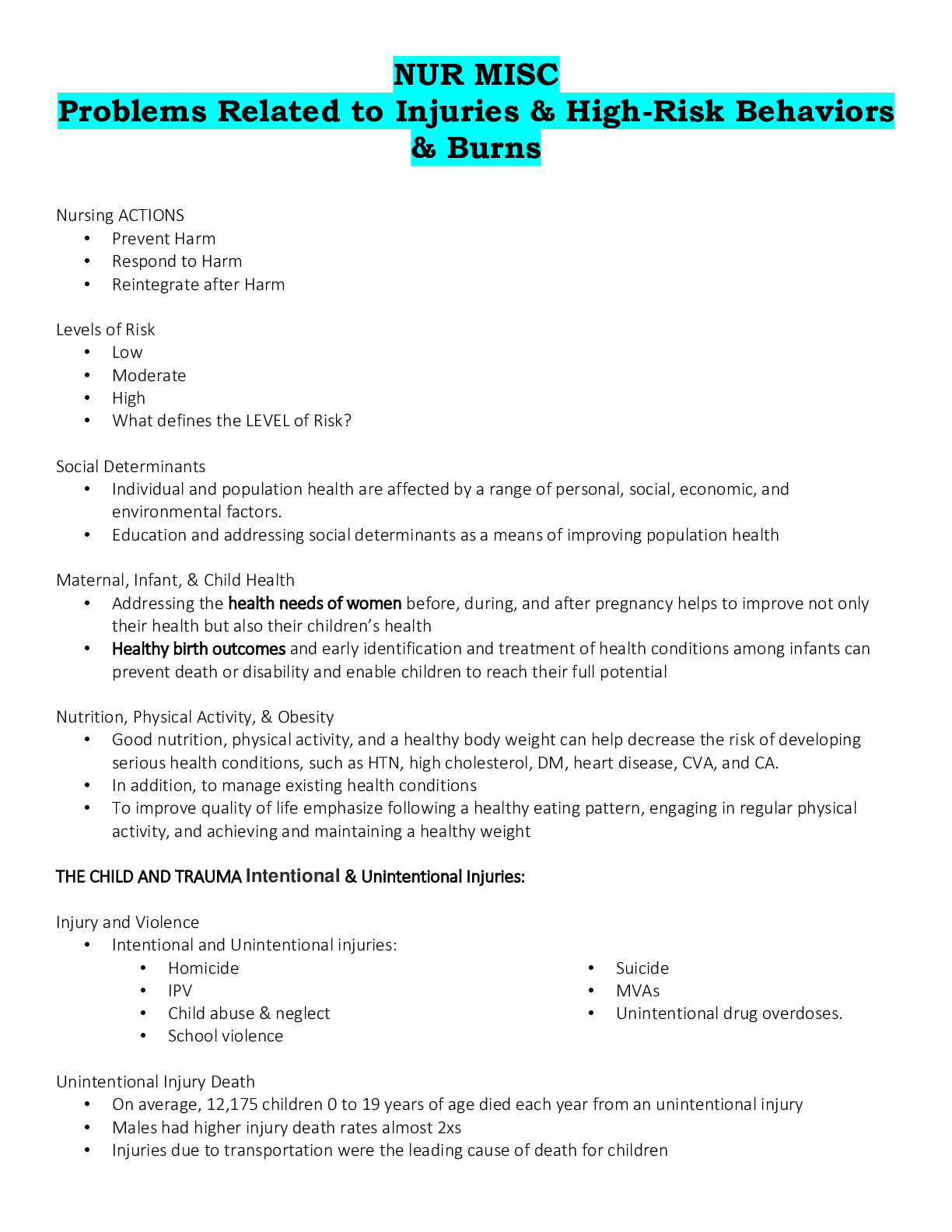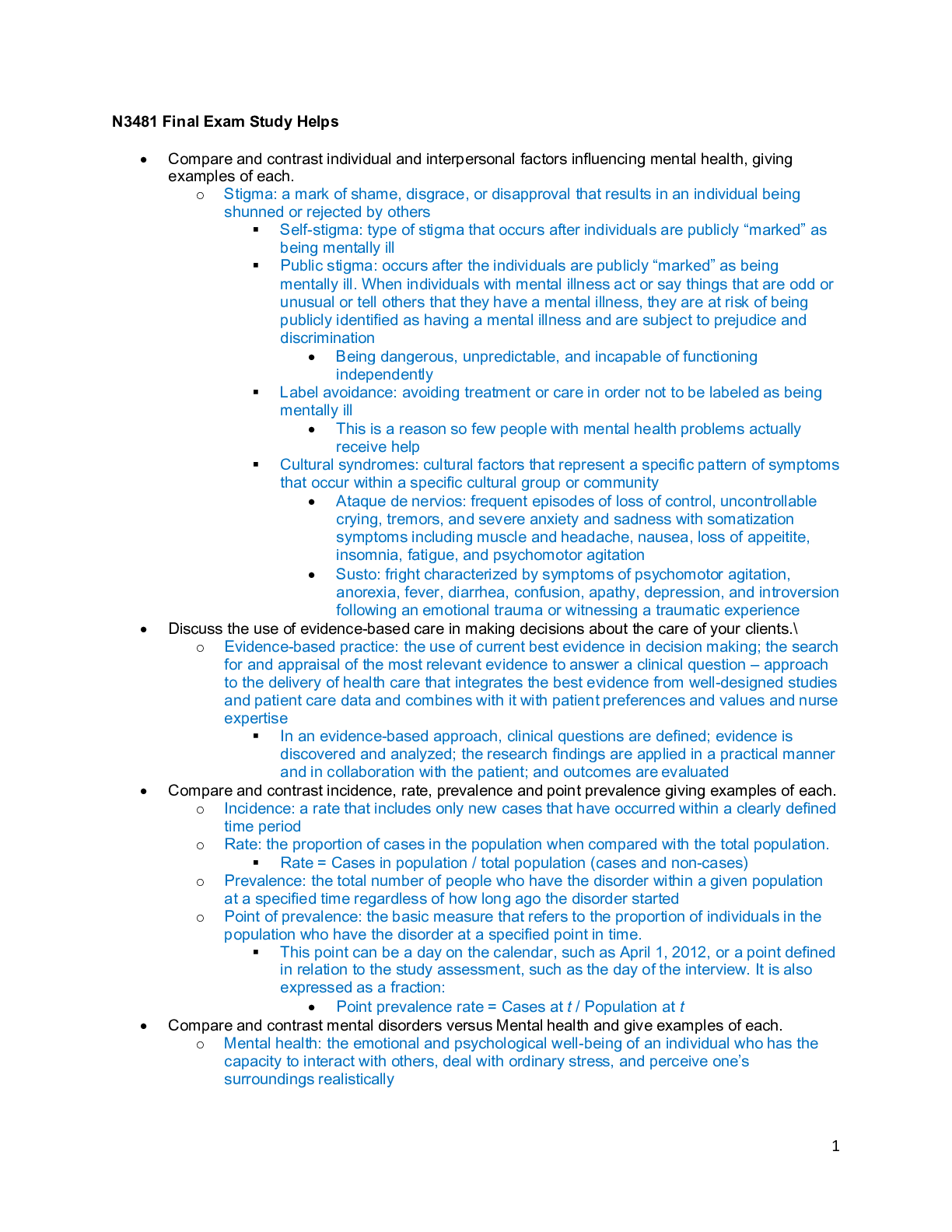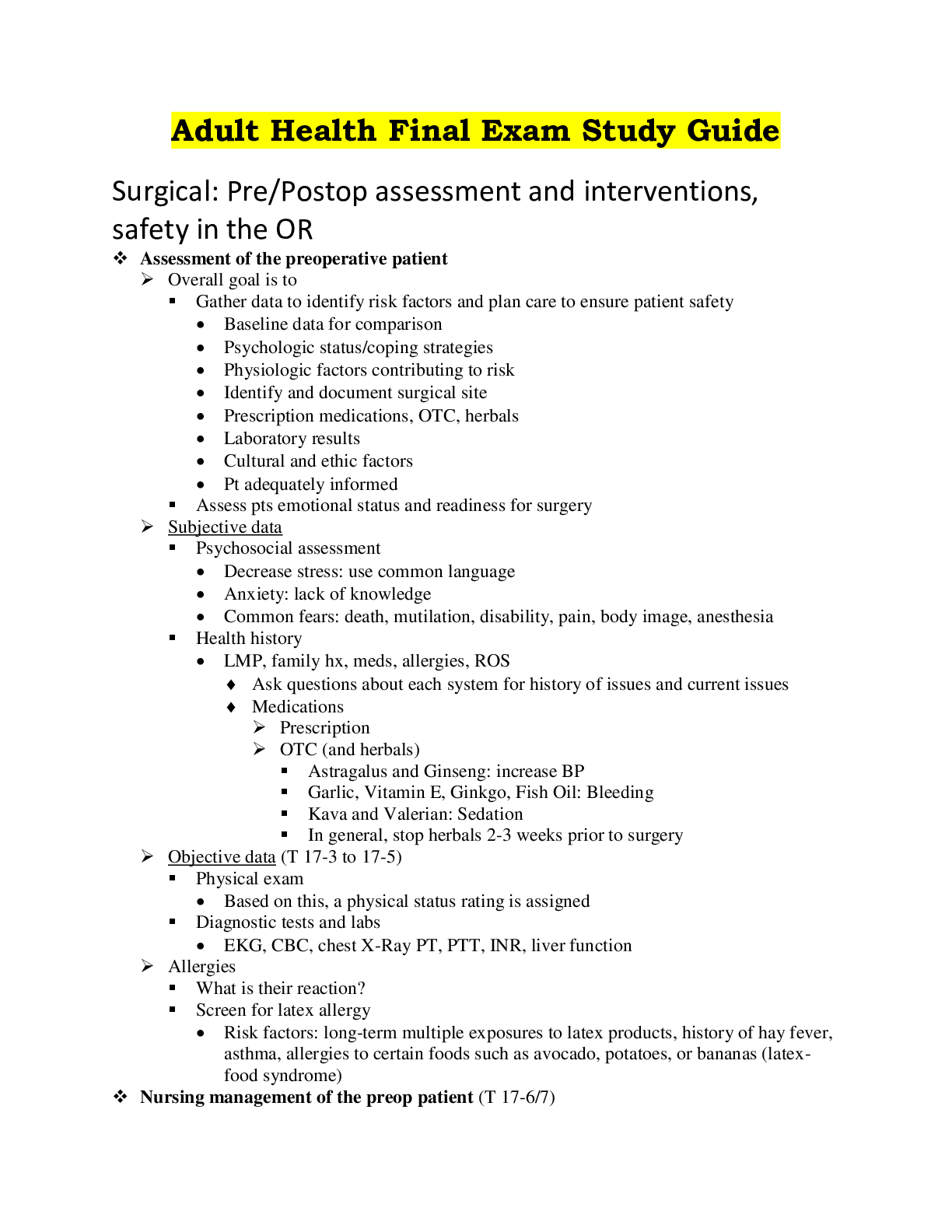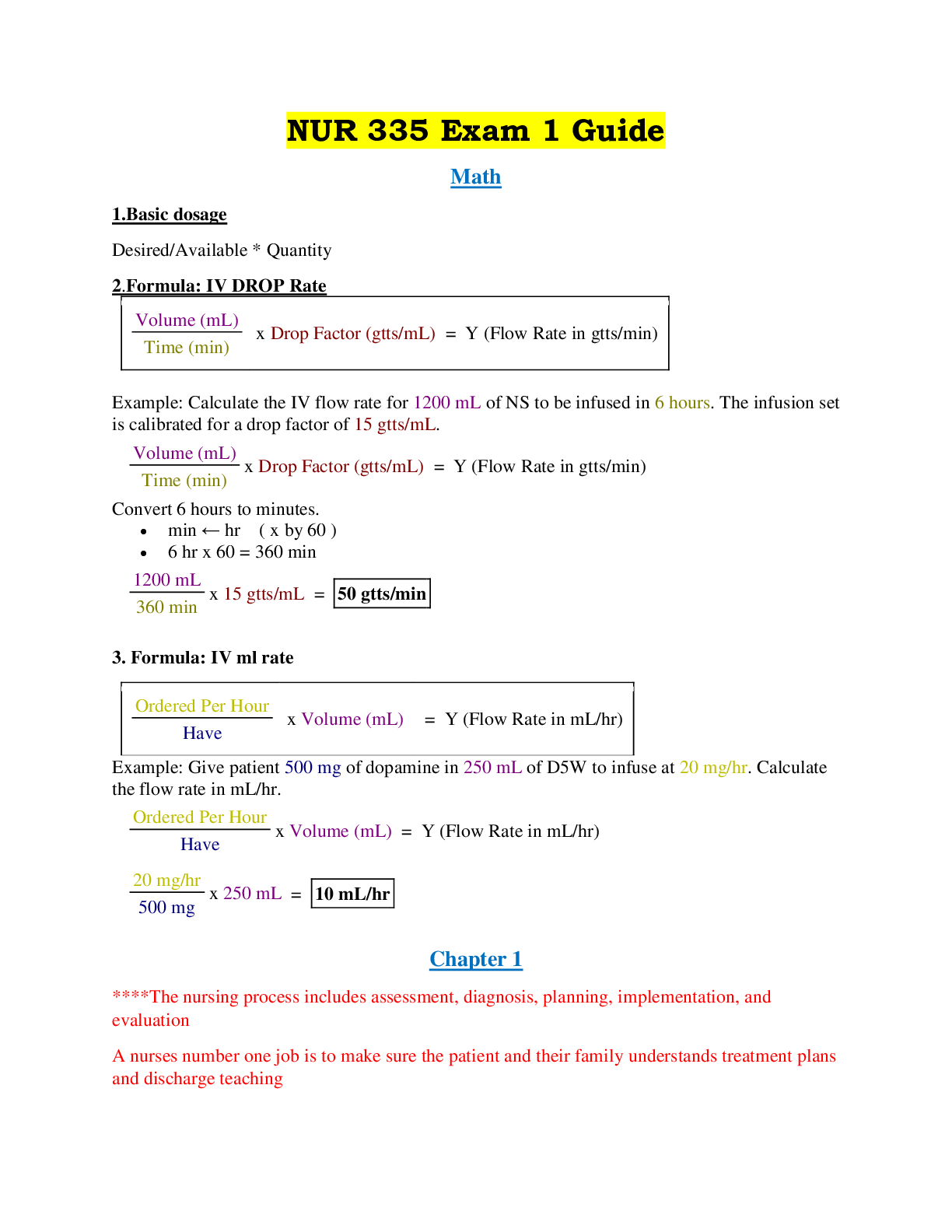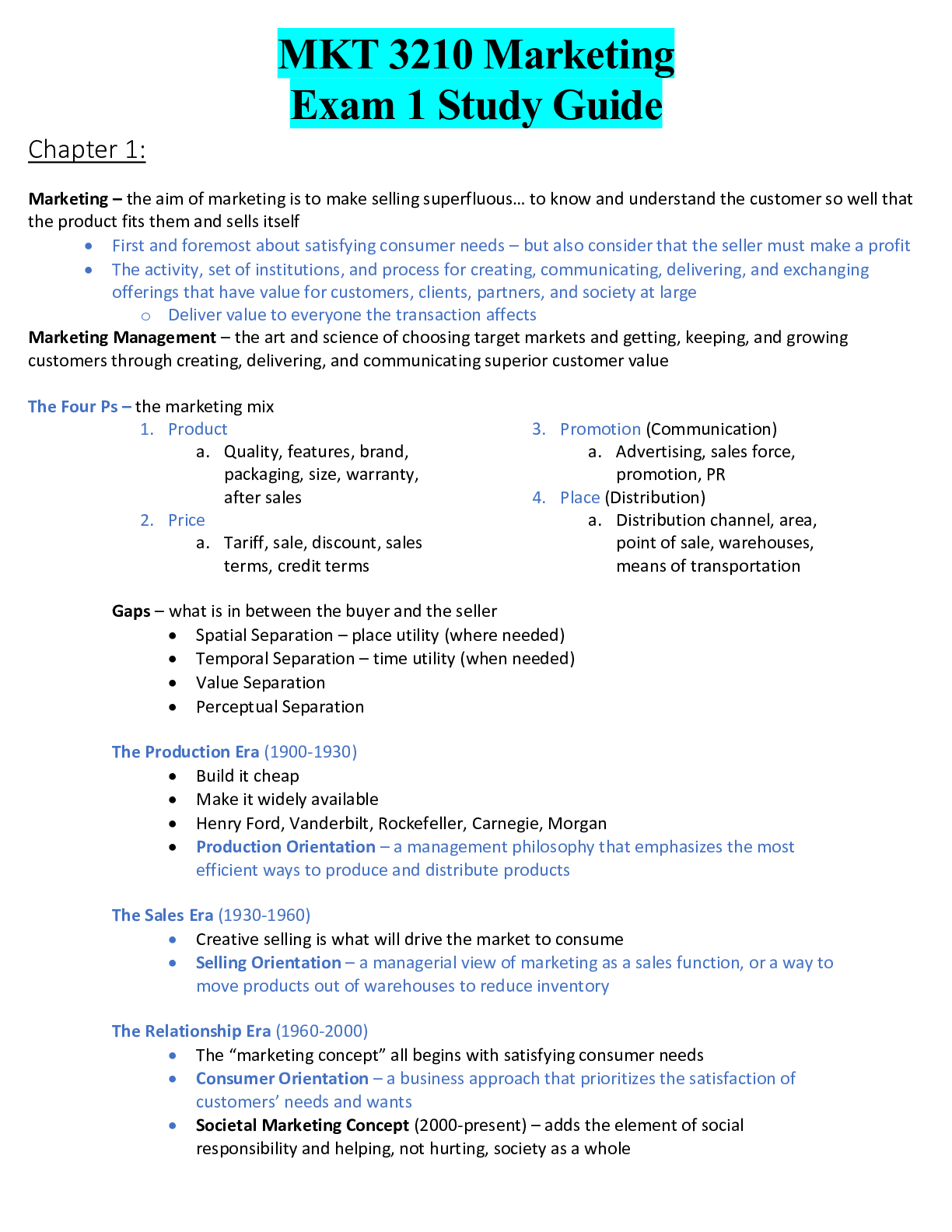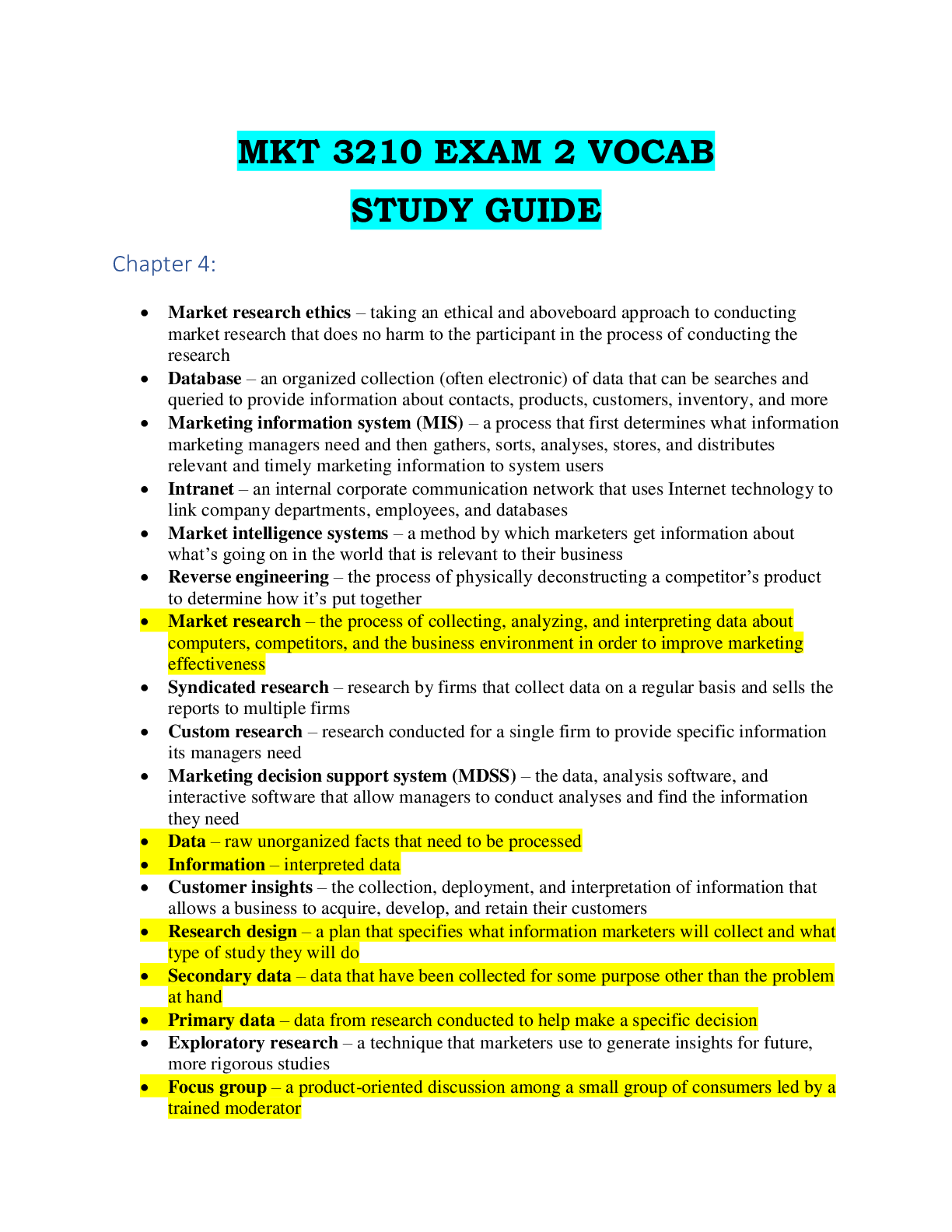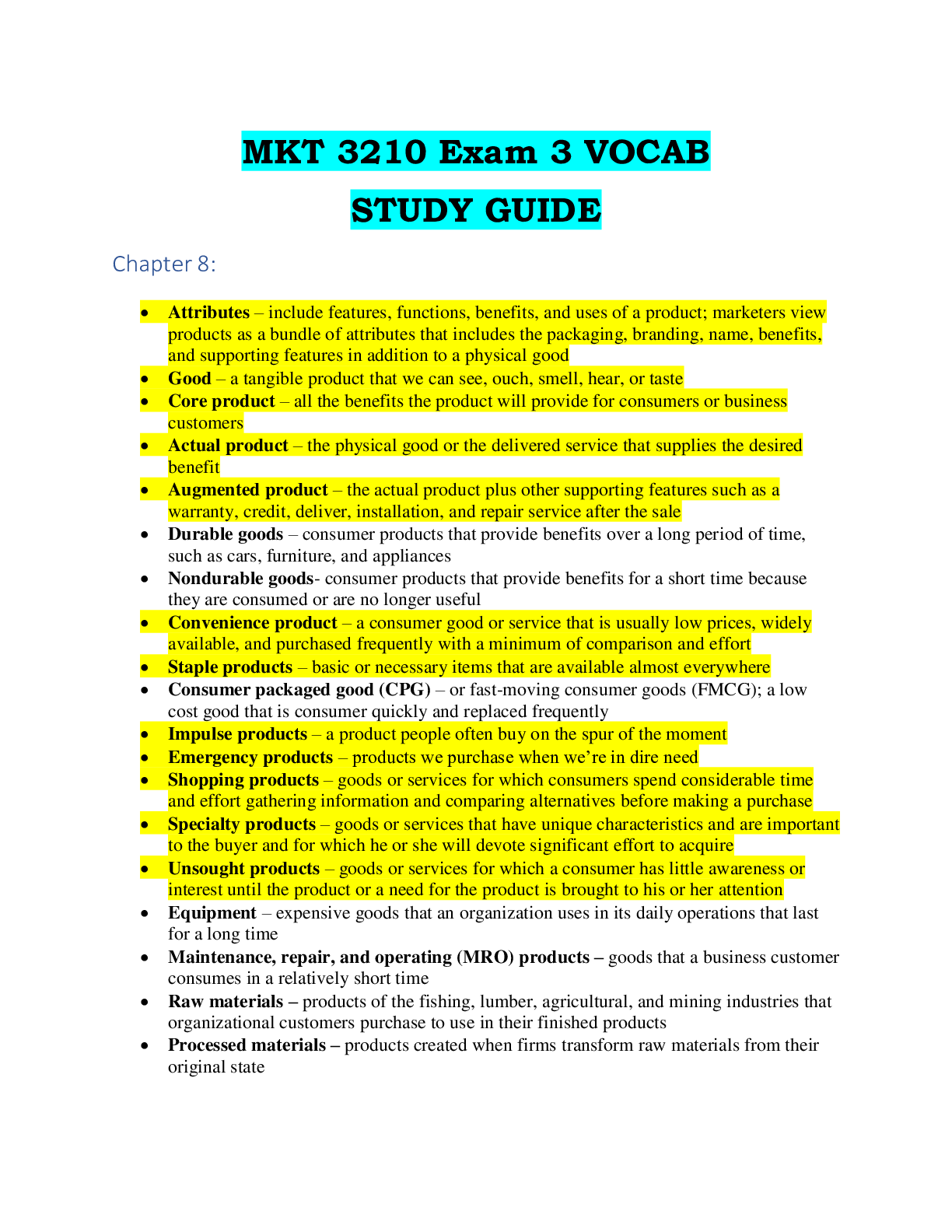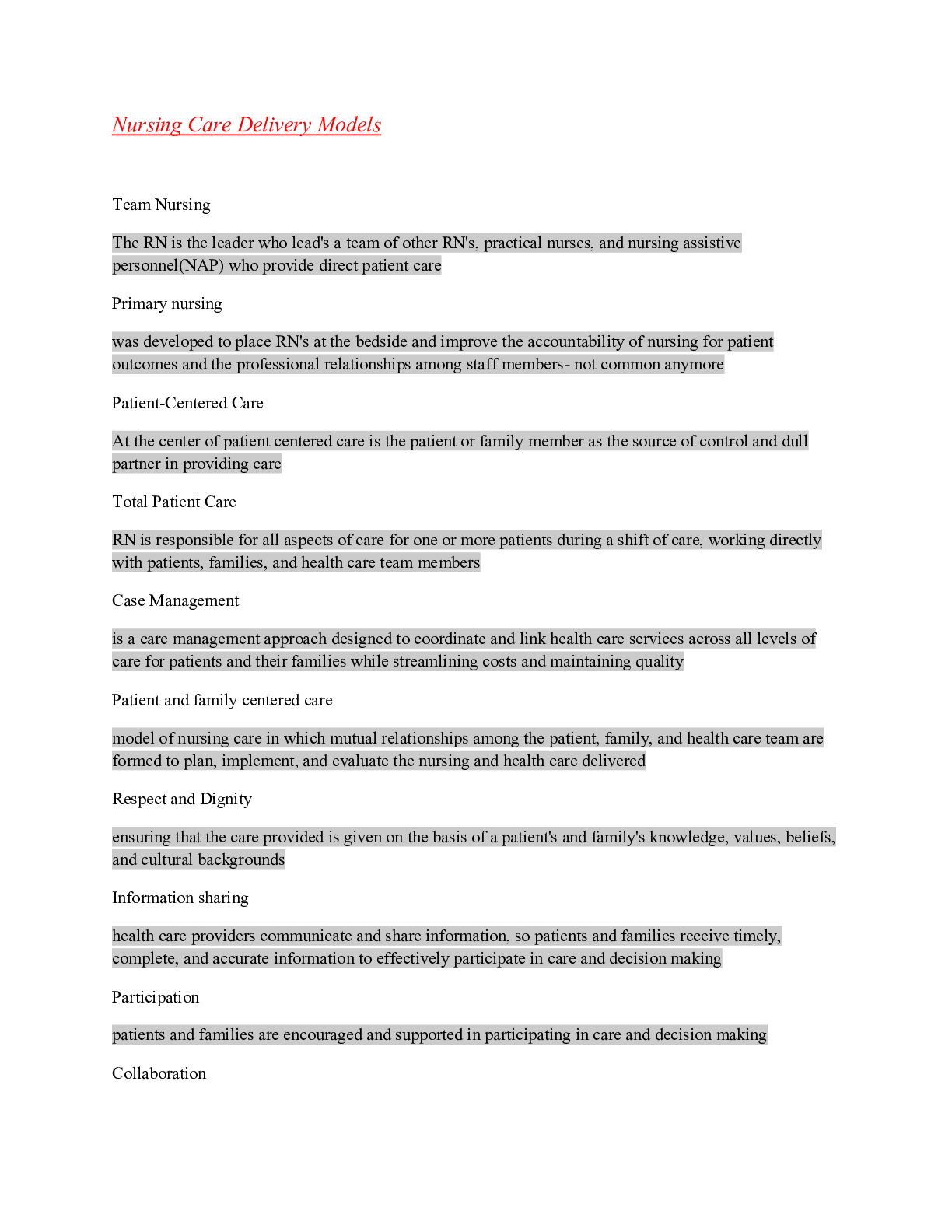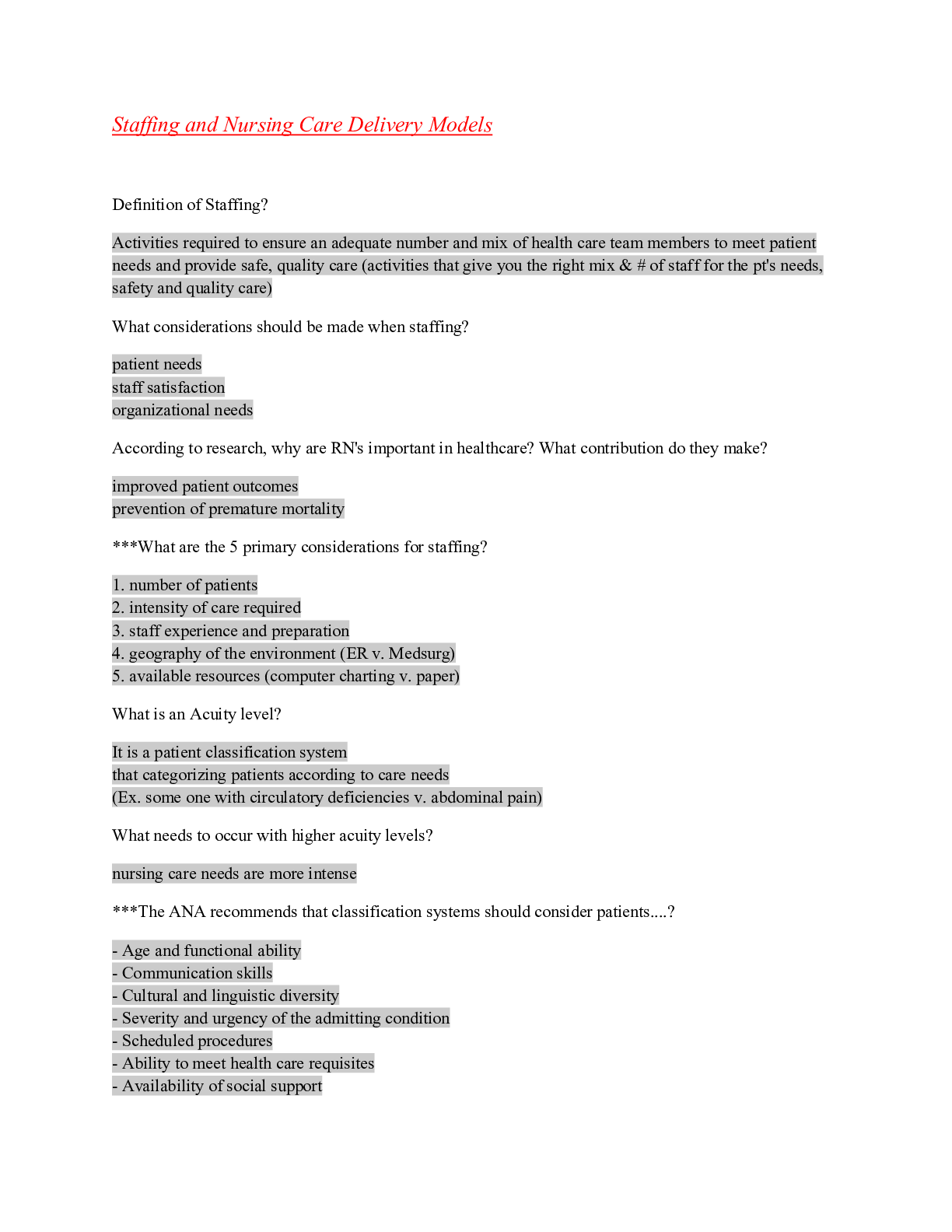Health Care > STUDY GUIDE > Healthcare Delivery System Chapter #1 Exam Guide Questions all answered 100 % Correct. (All)
Healthcare Delivery System Chapter #1 Exam Guide Questions all answered 100 % Correct.
Document Content and Description Below
Healthcare Delivery System Chapter #1 Exam Guide Questions all answered 100 % Correct. Healthcare Delivery System Chapter #1 Most developed countries have national health insurance programs run by... the government and financed through general taxes. Almost all citizens in such countries are entitled to receive health care services, except in America. The American healthcare system is not a true system. The "system" continued to undergo periodic changes, mainly in response to concerns regarding cost, access, and quality. MCOs-Managed care Orgnizations It functions is to promises to provide healthcare services contracted under the health plan to the enrollees of the plan A Broad Description of the System: The system has financing, insurance, delivery, and payment mechanisms that remain somewhat coordinated. Each are part of the public (government) and private sources. The government runs program health for only a selected groups of people who meet the criteria for eligibility. Government programs also deliver health care services to certain recipients: Military personnel, American Indians/Alaska Natives, and some of the uninsured through Medica, Medicaid, and Children's Health Insurance Program (CHIP) CHIP Children's Health Insurance Program. It is the insurance program for children from low-income families and it is also another state/federal partnership. Medicare The program for the elderly and certain disabled individuals. Medicaid The program for the poor, jointly administered by the federal government and state governments HMOs Health Maintenance Organizations Access the ability of an individual to obtain health care services when needed. Provider any entity that delivers health care services and can either independently bill for those services or it tax supported. Reimbursement is payment made for services delivered by a provider. ACA - The Affordable Car Act The main goal is to increase access of health care and make it more affordable, mainly for those who were previously uninsured. All US citizens and legal residents are required to have health insuance or pay a fine. The two main avenues that covers the unisured are expansion of Medicaid and purchase of subsidized private health insurance through government-ran exchanges. Insurance companies are required to include coverage for a variety of health care services. ACA fails to achieve universal coverage and may also not successfully achieve access for a large segment of the US population. It promises to shift focus from disease treatment to disease prevention and improved health outcome, however, additional responsibilities are placed on providers to deliver services in a more coordinated manner while improving the quality of care. Unisured those without private or public health insurance coverage. Health Care Reform The expansion of health insurance to cover the uninsured Premium Cost Sharing Requiring the employees to pay a portion of the cost Utilization The quantity of health care consumed Managed Care is a system of health care delivery that seeks to achieve efficiencies by integrating the four functions of health care delivery . it employs mechanisms to control Manager) utilization of medical services, and determines the price at which the services are purchased and consequently how much the providers are paid. Universal Coverage enables all citizens and legal residents to have health insurance Third-party insurers act as intermdiaries between the financing and delivery functions. Health Plan Includes the collective array of covered health services that the enrollee is entitled to. Enrollee (Member) Individual covered under the plan Global budgets Use to determine total health care expenditures on a national scale and to allocate resources within budgetary limits. Standards of Participation This means that providers must comply with the standards established by the government of be certified to provide services to Medicare, Medicaid and CHIP beneficiaries Free Market is when multiple patients (buyers) and providers (sellers) act independently, and patients can choose to receive services from any provider. Primary Care when people receive routine care on a continual basic. Demand is the quantity of health care purchased Universal Access The ability of all citizens to obtain health care when needed, it remains mostly a theoretical concept. Moral Hazard is that once enrollees have health insurance, they will use health care services to a greater extent than if they were to pay for these services out-of-pocket. Single-payee system a national health care system, because there is one primary payer, the government. Phantom providers are services performed by providers, such as anesthesiologists, nurse anesthetists, and pathologist. Package Pricing It is a bundled fee for a package of related services. Balance Bill when a provider bills the patient for any amount the health plan did not pay Administrative Costs the cost associated with billing, collections, bad debts, and maintaining medical records Defensive Medicine is used by practitioners as a means of protecting themselves against the possibly of litigation When practitioners prescribing additional diagnostic tests, scheduling return checkup visits, and maintaining copious documentation that is in many cases unnecessary and are costly and inefficient. Socialized Health Insurance (SHI) In this system, insurance and payment functions are closely integrated and the financing function is better coordinated with the insurance and payment functions then in the United State The governemnt exercise overall control. Government-mandated contributions by employers and employees finance health care. Private providers deliver health care services Private not -for-profit insurance companies, called Sickness Funds are responsible for the collecting the contributions and paying physicians and hospital National Health Insurance (NHI) The government finances health care through general taxes, but the actual care is delivered by private providers. it requires a tighter consolidation of the financing, insurance, and payment functions coordinated by the government. National Health System (NHS) It received it's financing through a tax-supported NHI(National Health Insurance Program) The infrastructure for the delivery of medical care. The government operates most of the medical institutions. Most care providers are either government employees or they are tightly organized in a publicly managed infrastructure. Provider-induced demand Practitioners who have a financial interest in additional treatment and create artificial demand Quad-function model The four functional components of the delivery health care system Financing Insurance Delivery Payment Need It's the amount of medical care that medical experts believe a person should have to remain or become healthy Why does cost containment remain an elusive goal in US health services delivery? Partly because there are few if any mechanisms in place to actually generate it. But there are several factors. Insured and the uninsured alike don't have the means to shop around and ever if they do, it is hard to tell who is cheaper and who is more expensive. Many cases people are dealing with a major medical problem and once you are in the hospital it becomes difficult to go somewhere else for treatment. Many providers are paid by the procedure, rather than for outcomes or number of patients, so they have an economic incentive to order more procedure than needed. What are the two main objectives of a health care delivery system? 1. It must enable all citizens to obtain needed health care services 2. The services must be cost effective and meet certain established standards of quality Name the four basic functional components of the US healthcare delivery system What role does each play in the delivery of health care? Delivery - The term refers to the provision of health care services by various providers Payment - it deals with reimbursement to providers for the services in which they delivered. Financing -it is necessary to obtain health insurance or to pay for health care service. most America receives benefits from employer and their dependent and spouse are also covered. Insurance - protect the insured against catastrophic risks when needing expensive health care services. What is the primary reason for employers to purchase insurance plans to provide health benefits to their employees? Employers are mandated to offer health insurance to their employees Why is it that, despite public and private health insurance program, some US citizens are without health care coverage? how will the ACA change this? Many American can't afford to purchase health insurance, therefore, the ACA would change this because it requires that all US citizens and legal residents must be covered by either public or private insurance or they would have to pay tax at the end of the year. What is a managed care? It is a system of health care delivery that seeks to achieve efficiencies by integrating the four functions of health care. It employs mechanism to control manage utilization of medical service Managed care determines the price at which the services are purchased and consequently, and how much to pay providers. Why is the US health care market referred to as "imperfect"? It is difficult for patients to receive health services needed at a price they can afford. Discuss the intermediary role of insurance in the delivery of health care. ... Who are the major players in the US health services system? what are the positive and negative effects of the often conflicting self-interests of these players? ... What main roles does the government play in the US health services system? ... Why is it important for health care managers and policy makers to understand the inricacies of the health care delivery system? ... What is the difference between national health insurance (NHI) and a National Health System (NHS) In a National Health Insurance program, it is financed through general taxes, but the actual care is delivered by private providers. However in a National Health System, it is tax supported, however, the government manages the infrastructure for the delivery and most of the medical institution. providers are government employees. What is socialized health insurance (SHI)? red. [Show More]
Last updated: 1 year ago
Preview 1 out of 6 pages
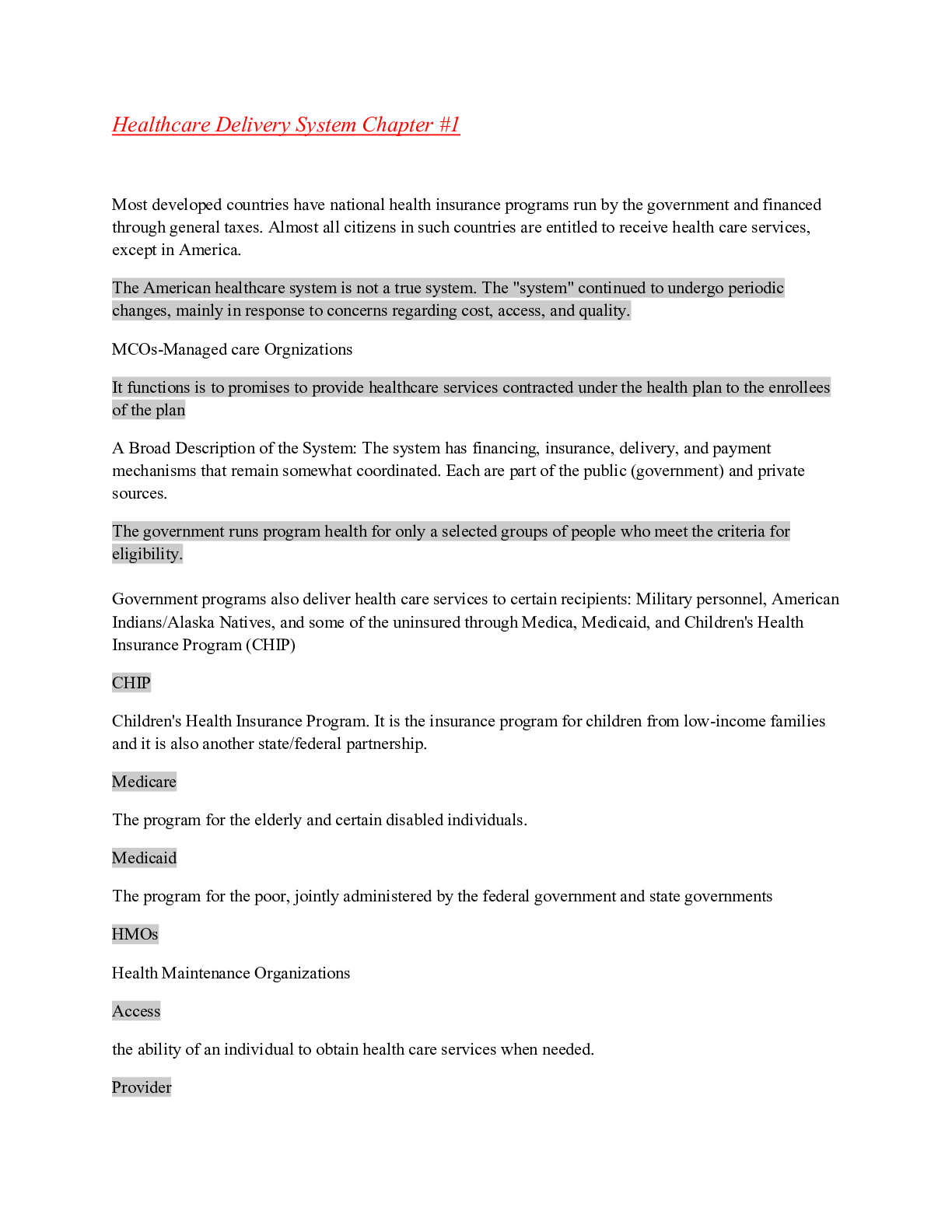
Buy this document to get the full access instantly
Instant Download Access after purchase
Add to cartInstant download
We Accept:

Reviews( 0 )
$10.00
Document information
Connected school, study & course
About the document
Uploaded On
Nov 21, 2022
Number of pages
6
Written in
Additional information
This document has been written for:
Uploaded
Nov 21, 2022
Downloads
0
Views
37

